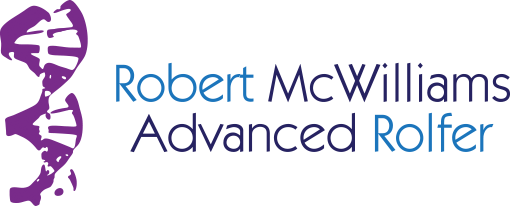Comments on this popular video:http://www.facebook.com/video/video.php?v=1664492411895&ref=mfI decided to take a look at this wearing my dance and Rolfer™ hats. One thing a Rolfer looks for in a client is their movement initiation preferences for using ground and spatial orientation. We all do both all the time, of course, but we will have a tendency for one over the other. This pattern is termed here ‘G’ for a grounded, weighted, push preference, and G’ for a spatial, lighter, reach preference. The terms also indicate ‘functional centers of gravity’ for an individual: a G individual’s functional center of gravity lower, nearer the area below the belly button and downwards, and a natural ‘down’ focus in the eyes and in coordination; a G’ individual naturally carries their functional gravity center higher, in the chest area, with a natural ‘up, out and around’ attention. In terms of iconic dancers, this is often simplified into G’=Fred Astaire, and G=Gene Kelly.Both of these are important and valuable functional patterns. They are important to recognize because often the one that is dominant in an individual is part of the problem with postural or muscular pain and dysfunction. Because it is “familiar” to the individual, it also needs to be part of the solution, on the way to later opening up to the other preference to round out or relax the individual into better alignment in movement.So, the question is, are these dancers more G or G’? My impression is more G’, but within a very “grounded” movement context (?) . There is some strong use of ground in the more gymnastic parts at the end, so it would submit to a more detailed look. Looking at the beginning, the dancers lilt and skate over the ground, like ice skaters. Regarding the ‘street vs art’, the partnering is clearly ‘modern dance’ in look and feel. These guys have seen the inside of a dance studio, regardless of what medium they are now working in, and bring that background to this video-at least in the opening of the video.So, more Astaire than Kelly; more sky than earth, at the start. They glide and float around and over imaginary spaces and fulcra. Balletic twirls with arms raised overhead, but the shoulders are still tight into the neck-this is ‘imitation’ and playing around, more than use of a balletic movement-base, a bit like Fred Astaire incorporating turns in his routines that look like ballet, but clearly were not the product of years of training in that style. One lad does a wonderful turn on the tip of his sneaker that is extraordinarily rooted, for me, in a way that most ballerinas would die to be able to be. The shoes, and his native strength, allow this sense of ‘ground’ on point. Again, many contemporary ballerinas would love to achieve that, but don’t.The same fellow takes lovingly, perhaps reverently to the ground for a ‘breaking’ style ground spin, as much paying homage to the style as anything, showing his fluency earth/sky. The striped short gentleman than goes so far as bend over backwards to ‘one-up’ the previous, using his head as a landing point and support. This looks very ‘ground’-mainly because the ability to yield into the movement is what saves him from injury-but the jarring look of the landing shows less adaptability than he, and we, might like. Orange raincoat man shows explosiveness out of the ground, like a gymnast, more fully confident in his yield to pushing sequence, which is a hallmark of effective G orientation, to me. White T-shirt shows the success in an ‘up-based’ strategy for an equally athletic flip in the air, his preparation for jumps coming by clearly establishing length and spatial pulls, like a ballet dancer might, before a tours en l’air. All-black outfit shows again his fluency between up and down orientations, yet is subtly more G than G’, for me, not just in his choreographic choices of movement, but in his sensitively weighted efforting, even in turns and ‘skating’ movements.The gestural bit at the end shows the essentially improvisational collaborative and playful nature of the whole thing. The gestures are like a sign language with the hands, chest and torso, very G’ in their way of relating to the group and their common space.

Hi Rob – hope you are well. fascinating article but I couldn’t find the link to the video… Love Judith
I just put a hyperlink to the URL. You should be able to click on the link now.
Rob I am a FaceBook hold out and they will not let me see the video. Love the G and G’ concepts and your analysis.